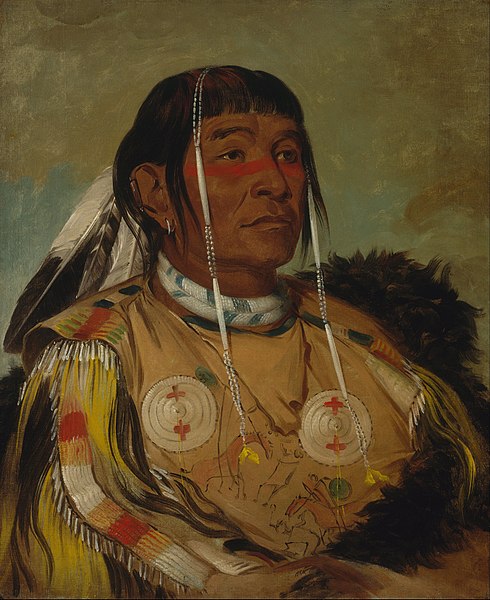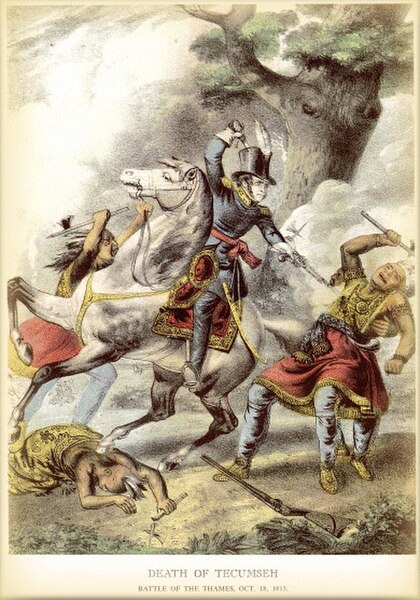George Catlin was an American lawyer, painter, author, and traveler, who specialized in portraits of Native Americans in the American frontier. Traveling to the American West five times during the 1830s, Catlin wrote about and painted portraits that depicted the life of the Plains Indians. His early work included engravings, drawn from nature, of sites along the route of the Erie Canal in New York State. Several of his renderings were published in one of the first printed books to use lithography, Cadwallader D. Colden's Memoir, Prepared at the Request of a Committee of the Common Council of the City of New York, and Presented to the Mayor of the City, at the Celebration of the Completion of the New York Canals, published in 1825, with early images of the City of Buffalo.
George Catlin by William Fisk, 1849
Self-portrait, aged 28
Catlin's travels in North America between 1830 and 1855
Sha-có-pay, The Six, Chief of the Plains Ojibwa, an 1832 portrait at Fort Union that is now housed in the Smithsonian American Art Museum in Washington, D.C.
The American frontier, also known as the Old West, and popularly known as the Wild West, encompasses the geography, history, folklore, and culture associated with the forward wave of American expansion in mainland North America that began with European colonial settlements in the early 17th century and ended with the admission of the last few contiguous western territories as states in 1912. This era of massive migration and settlement was particularly encouraged by President Thomas Jefferson following the Louisiana Purchase, giving rise to the expansionist attitude known as "manifest destiny" and historians' "Frontier Thesis". The legends, historical events and folklore of the American frontier have embedded themselves into United States culture so much so that the Old West, and the Western genre of media specifically, has become one of the defining features of American national identity.

The cowboy, the quintessential symbol of the American frontier. Photo by John C. H. Grabill, c. 1887.
Daniel Boone escorting settlers through the Cumberland Gap
Siege of Fort Detroit during Pontiac's Rebellion in 1763
Native leader Tecumseh killed in battle in 1813 by Richard M. Johnson, who later became vice president








